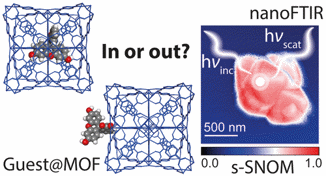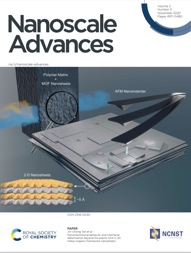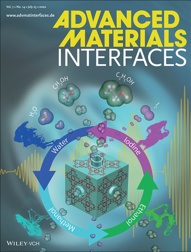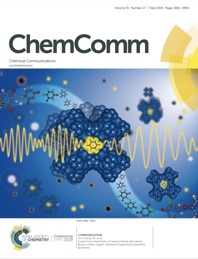Biography
Professor Jin-Chong Tan has a BEng in Mechanical Engineering (Malaysia, 1999) and an MEng in Materials Engineering (Singapore, 2001). In 2005, he obtained a PhD in Materials Science from Cambridge University, where he studied lightweight composite materials constructed from stainless steel fibres.
He moved to Oxford University in September 2012 to take up a University Lectureship (Associate Professorship) in Mechanical Engineering, together with a Tutorial Fellowship in Engineering Science at Balliol College. In July 2018, he became a full professor and was conferred the title of Professor of Engineering Science (Nanoscale Engineering).
In the Media
- ERC Advanced Grant (UKRI): TEGMOF
- ERC Proof of Concept: LUMIVOCS
- Smart sensor could revolutionise crime and terrorism prevention
- ERC Consolidator Grant: PROMOFS
- BBC Radio 4 - Science in Action Broadcast
You can hear the story here (18.45 on the clock)
Most Recent Publications
AI-Enabled Piezoelectric Wearable for Joint Torque Monitoring.
AI-Enabled Piezoelectric Wearable for Joint Torque Monitoring.
Understanding Metal-Organic Framework Densification: Solvent Effects and the Growth of Colloidal Primary Nanoparticles in Monolithic ZIF-8.
Understanding Metal-Organic Framework Densification: Solvent Effects and the Growth of Colloidal Primary Nanoparticles in Monolithic ZIF-8.
Mechanochemical Synthesis Enables Melting, Glass Formation and Glass-Ceramic Conversion in a Cadmium-Based Zeolitic Imidazolate Framework.
Mechanochemical Synthesis Enables Melting, Glass Formation and Glass-Ceramic Conversion in a Cadmium-Based Zeolitic Imidazolate Framework.
The role of surface deformation on responsivity of the pillared layer metal-organic framework DUT-8(Ni).
The role of surface deformation on responsivity of the pillared layer metal-organic framework DUT-8(Ni).
Organic solid-state photochromism using porous scaffolds
Organic solid-state photochromism using porous scaffolds
Research Interests
Professor Jin-Chong Tan leads the Multifunctional Materials & Composites (MMC) Laboratory, where his group develops porous metal-organic frameworks, multifunctional thin films, polymer membranes and bespoke nanocomposite systems targeting real-world applications. Recent research interests include nanoengineering of novel lightemitting materials and tuneable nanocomposites for disruptive sensing technologies.
Their approach involves the application of cutting-edge experimental techniques, such as atomic force microscopy, nanoindentation, vibrational spectroscopy and imaging, in combination with theoretical modelling and quantum mechanical calculations on state-of-the-art supercomputers.
The group has strong links with the Diamond Light Source and the ISIS Neutron & Muon Spallation Source in Harwell campus, which are big science facilities in the UK. They use high-intensity synchrotron and neutron irradiation to probe the structure-property relations of new functional materials and complex composite systems.
Current Projects
TEGMOF
Nanoengineering of triboelectric energy generators employing metal-organic framework materials
Elucidating the pathways for human tooth enamel mineralisation by 4D microscopy and microfluidics
Portable Luminescent Sensor for Volatile Organic Compounds
Nanoengineering and processing of metal-organic framework composites for photonic sensors
Imaging and high-resolution spectroscopy of metal-organic frameworks using synchrotron irradiation
Uncovering the low-energy lattice dynamics in nanoporous materials via high-resolution neutron spectroscopy
Thermo-mechanical properties and engineering performance of mixed-matrix membranes integrating metal-organic frameworks
Most Recent Publications
AI-Enabled Piezoelectric Wearable for Joint Torque Monitoring.
AI-Enabled Piezoelectric Wearable for Joint Torque Monitoring.
Understanding Metal-Organic Framework Densification: Solvent Effects and the Growth of Colloidal Primary Nanoparticles in Monolithic ZIF-8.
Understanding Metal-Organic Framework Densification: Solvent Effects and the Growth of Colloidal Primary Nanoparticles in Monolithic ZIF-8.
Mechanochemical Synthesis Enables Melting, Glass Formation and Glass-Ceramic Conversion in a Cadmium-Based Zeolitic Imidazolate Framework.
Mechanochemical Synthesis Enables Melting, Glass Formation and Glass-Ceramic Conversion in a Cadmium-Based Zeolitic Imidazolate Framework.
The role of surface deformation on responsivity of the pillared layer metal-organic framework DUT-8(Ni).
The role of surface deformation on responsivity of the pillared layer metal-organic framework DUT-8(Ni).
Organic solid-state photochromism using porous scaffolds
Organic solid-state photochromism using porous scaffolds
Selected Publications
"Unravelling the Ageing Effects of PDMS-based Triboelectric Nanogenerators", Advanced Materials & Interfaces, 2400094 (2024).
Open Access: [DOI] [pdf] [SI] Journal Cover: [Back cover]
"High-Performance Triboelectric Nanogenerators Incorporating Chlorinated Zeolitic Imidazolate Frameworks with Topologically Tunable Dielectric and Surface Adhesion Properties", Nano Energy, 114, 108687 (2023).
Open Access: [DOI] [pdf] [SI]

BOOK CHAPTER - "Fundamentals of MOF Mechanics & Structure–Mechanical Property Relationships", in Mechanical Behaviour of Metal – Organic Framework Materials, The Royal Society of Chemistry (2023).
Links: [FREE - Chapter 1] [PDF] [Preface]
“High rate nanofluidic energy absorption in porous zeolitic frameworks”, Nature Materials, 20, 1015–1023 (2021). [DOI] Press releases / Journal cover: [Oxford University] [Ghent University] [Nature Portfolio]

"Near-field infrared nanospectroscopy reveals guest confinement in metal-organic framework single crystals", Nano Letters, 20, 7446-7454 (2020). [DOI]

"Nanomechanical Properties and Failure Mechanisms of Two‑Dimensional Metal-Organic Framework Nanosheets", Nanoscale Advances, 2, 5181-5191 (2020). [DOI] Journal cover:

"Guest-Tunable Dielectric Sensing Using a Single Crystal of HKUST‑1", Advanced Materials Interfaces, 7, 2000408 (2020). [DOI] Journal cover:

"Guest‑Host Interactions of Nanoconfined Anti-Cancer Drug in Metal‑Organic Framework Exposed by Terahertz Dynamics", ChemComm, 55, 3868–3871 (2019). [DOI] Press Release: [ISIS Science Highlights] Journal cover:

"Optochemically Responsive 2D Nanosheets of a 3D Metal-Organic Framework Material", Advanced Materials, 29, 1701463 (2017). [DOI] Press Release: [Oxford University News] Journal cover:

"Multifunctional Supramolecular Hybrid Materials Constructed from Hierarchical Self-Ordering of in situ Generated Metal-Organic Framework (MOF) Nanoparticles", Advanced Materials, 27(30), 4438-4446 (2015). [DOI] Press Release: [Oxford Science Blog - "Shape-shifting gels get smarter"] Journal cover:

A full listing of research papers is available on GoogleScholar
Most Recent Publications
AI-Enabled Piezoelectric Wearable for Joint Torque Monitoring.
AI-Enabled Piezoelectric Wearable for Joint Torque Monitoring.
Understanding Metal-Organic Framework Densification: Solvent Effects and the Growth of Colloidal Primary Nanoparticles in Monolithic ZIF-8.
Understanding Metal-Organic Framework Densification: Solvent Effects and the Growth of Colloidal Primary Nanoparticles in Monolithic ZIF-8.
Mechanochemical Synthesis Enables Melting, Glass Formation and Glass-Ceramic Conversion in a Cadmium-Based Zeolitic Imidazolate Framework.
Mechanochemical Synthesis Enables Melting, Glass Formation and Glass-Ceramic Conversion in a Cadmium-Based Zeolitic Imidazolate Framework.
The role of surface deformation on responsivity of the pillared layer metal-organic framework DUT-8(Ni).
The role of surface deformation on responsivity of the pillared layer metal-organic framework DUT-8(Ni).
Organic solid-state photochromism using porous scaffolds
Organic solid-state photochromism using porous scaffolds
Teaching
P3 and A3 tutorials: structures, materials and solid mechanics
B8 Composites
C4 Modelling of Polymers
C13 Production Processes
Most Recent Publications
AI-Enabled Piezoelectric Wearable for Joint Torque Monitoring.
AI-Enabled Piezoelectric Wearable for Joint Torque Monitoring.
Understanding Metal-Organic Framework Densification: Solvent Effects and the Growth of Colloidal Primary Nanoparticles in Monolithic ZIF-8.
Understanding Metal-Organic Framework Densification: Solvent Effects and the Growth of Colloidal Primary Nanoparticles in Monolithic ZIF-8.
Mechanochemical Synthesis Enables Melting, Glass Formation and Glass-Ceramic Conversion in a Cadmium-Based Zeolitic Imidazolate Framework.
Mechanochemical Synthesis Enables Melting, Glass Formation and Glass-Ceramic Conversion in a Cadmium-Based Zeolitic Imidazolate Framework.
The role of surface deformation on responsivity of the pillared layer metal-organic framework DUT-8(Ni).
The role of surface deformation on responsivity of the pillared layer metal-organic framework DUT-8(Ni).
Organic solid-state photochromism using porous scaffolds
Organic solid-state photochromism using porous scaffolds
DPhil/Postdoc Opportunities
visit MMC Lab webpage for further information and contact Prof. Tan if you are interested in joining the research group.
Most Recent Publications
AI-Enabled Piezoelectric Wearable for Joint Torque Monitoring.
AI-Enabled Piezoelectric Wearable for Joint Torque Monitoring.
Understanding Metal-Organic Framework Densification: Solvent Effects and the Growth of Colloidal Primary Nanoparticles in Monolithic ZIF-8.
Understanding Metal-Organic Framework Densification: Solvent Effects and the Growth of Colloidal Primary Nanoparticles in Monolithic ZIF-8.
Mechanochemical Synthesis Enables Melting, Glass Formation and Glass-Ceramic Conversion in a Cadmium-Based Zeolitic Imidazolate Framework.
Mechanochemical Synthesis Enables Melting, Glass Formation and Glass-Ceramic Conversion in a Cadmium-Based Zeolitic Imidazolate Framework.
The role of surface deformation on responsivity of the pillared layer metal-organic framework DUT-8(Ni).
The role of surface deformation on responsivity of the pillared layer metal-organic framework DUT-8(Ni).
Organic solid-state photochromism using porous scaffolds
Organic solid-state photochromism using porous scaffolds








